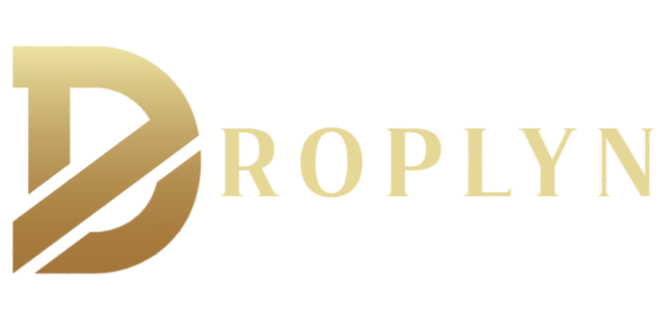TECH
The Future of Audio Media: What’s Next for RadioRed?

In a world where digital content reigns supreme, radio might seem like an outdated medium. Yet, RadioRed stands out as a beacon of innovation in audio media. With its rich history and loyal listener base, it continues to adapt and thrive amid the rapid changes in technology and consumer behavior. But what does the future hold for this iconic platform? As we dive into the evolution of audio media, we’ll explore how RadioRed is navigating current challenges while embracing groundbreaking innovations that could redefine its role in entertainment and information dissemination. The journey ahead promises excitement—let’s take a closer look at what’s next for RadioRed!
The Evolution of Audio Media
Audio media has undergone a remarkable transformation over the decades. From the crackling sounds of AM radio to the crisp clarity of digital streaming, each stage brought its own innovations and challenges.
In the early days, radio was all about live broadcasts and limited programming. Listeners eagerly awaited their favorite shows, often gathering around a single device in homes.
The rise of FM changed everything. It offered better sound quality and a broader range of music genres. This shift captivated audiences and established new formats that appealed to niche markets.
With the internet boom came podcasting, allowing anyone with a microphone to share stories or insights globally. This democratization opened doors for diverse voices previously unheard on traditional platforms.
Today’s listeners crave on-demand content tailored to their preferences. RadioRed must navigate this landscape while keeping its loyal audience engaged through innovation and adaptability.
Current Challenges Faced by RadioRed
RadioRed is navigating a complex landscape. The rise of streaming services has shifted listener habits significantly. Many now prefer on-demand content over traditional radio broadcasts. This change poses a challenge for RadioRed to maintain its audience.
Additionally, advertising revenue has become more competitive. Brands are increasingly investing in digital platforms that offer targeted ads and measurable results. As such, RadioRed must innovate to attract advertisers while retaining listener loyalty.
Moreover, the proliferation of podcasts presents another hurdle. With countless options available at listeners’ fingertips, standing out becomes essential for RadioRed’s survival.
Adapting to new technologies can be daunting. Keeping up with advancements in broadcasting methods requires consistent investment and adaptation strategies from RadioRed’s leadership team. These challenges necessitate agile responses as the company seeks to thrive in an evolving audio media environment.
Innovations in Audio Technology and Broadcasting
The landscape of audio technology is rapidly transforming. Innovations are reshaping how we produce and consume sound.
One major advancement is the rise of smart speakers. Devices like Amazon Echo and Google Home have changed what it means to listen to radio. Users can now access content through voice commands, making radio more interactive.
Streaming services also play a significant role in this evolution. They allow listeners to curate their own playlists while still enjoying live broadcasts from stations like RadioRed.
Moreover, podcasting continues to surge in popularity. This format offers on-demand content that complements traditional broadcasting, appealing especially to younger audiences who crave flexibility.
Advancements in AI are personalizing listening experiences further—tailoring recommendations based on user preferences makes every interaction unique and engaging.
The Impact on RadioRed and its Listeners
RadioRed has always been at the forefront of audio media. Its evolution reflects listeners’ changing needs and preferences.
As new technologies emerge, RadioRed adapts to maintain its relevance. This shift brings fresh programming options and innovative features that enhance listener engagement. Whether it’s through podcasts or live streaming, the variety keeps audiences tuned in.
Listeners now enjoy more personalized experiences than ever before. With tailored playlists and on-demand content, each individual can curate their own listening journey.
Moreover, the community aspect thrives as RadioRed fosters connections among fans. Social media platforms amplify discussions around shows, creating an interactive atmosphere where feedback shapes future content.
The impact extends beyond entertainment; it influences lifestyle choices too. From music trends to news coverage, what happens on RadioRed resonates deeply with its audience’s daily lives—shaping opinions and sparking conversations across various spheres.
Predictions for the Future of Audio Media
The future of audio media is brimming with potential. As technology advances, we can expect even more personalized listening experiences. Tailored content will become the norm, thanks to AI and machine learning.
Interactive audio formats are likely to gain traction. Imagine engaging with your favorite radio shows in real time or choosing story paths while listening to podcasts. This could redefine how we consume audio.
Moreover, the rise of smart speakers will amplify accessibility. Listeners will enjoy seamless integration across devices, making it easier than ever to tune into RadioRed wherever they are.
We may also see a resurgence in local content production as communities seek unique voices amidst global platforms. Local stories have power and connection that resonate deeply with audiences.
Collaboration between traditional radio stations and streaming services could shape new hybrid models for broadcasting, blending live interaction with on-demand convenience. The evolution is just beginning; stay tuned!
Conclusion: Embracing Change in the Industry
The landscape of audio media is rapidly changing, and RadioRed stands at a pivotal moment. As technology evolves, so too must the strategies of radio broadcasters. Embracing innovations in streaming services, podcasting, and interactive content will be essential for staying relevant.
Listeners today crave more than just music or talk shows; they seek engagement and personalized experiences. By leveraging advanced analytics and audience feedback, RadioRed can tailor its offerings to meet these demands.
Adapting to new platforms also presents opportunities for growth. Collaborating with social media influencers or integrating user-generated content could create vibrant communities around RadioRed’s brand.
Change may feel daunting, but it also opens doors for creativity and connection. The future holds immense potential for those willing to innovate and evolve alongside their audience. As we look ahead, embracing this transformation will ensure that RadioRed not only survives but thrives in the dynamic world of audio media.
TECH
Master the Mini Chart in Google Sheets for Instant Data Visualization

In today’s fast-paced world, data is everywhere. From business analytics to school projects, understanding data is crucial. But how can you quickly interpret and visualize data without cluttering your spreadsheet? Enter the concept of a mini chart in a cell within Google Sheets. This blog post will explore how these tiny charts can transform your data analysis experience and offer tips and tricks to make the most of them.
Why Mini Charts in a Cell Matter
Mini charts, or sparklines, are small, simple charts that fit within a single cell, providing a quick visual summary of data. These can be particularly useful when you want to compare trends over time or visualize fluctuations in data without creating large, complex charts. For anyone who regularly deals with data, mini charts offer an efficient way to visualize information directly in your spreadsheet.
These bite-sized visualizations are not just about aesthetics; they serve a practical purpose. By embedding a chart right in the cell, you reduce the need for separate graphs, freeing up space and keeping your spreadsheet neat. This approach is perfect for professionals, educators, and students who need to convey data insights concisely.
Using mini charts can also enhance your decision-making process. With a quick glance, you can see trends and outliers, making it easier to draw conclusions and inform strategic decisions. Whether you’re tracking sales, monitoring budgets, or analyzing research data, mini charts are an invaluable tool.
Getting Started with Sparklines in Google Sheets
Creating a mini chart, or sparkline, in Google Sheets is surprisingly simple. All it takes is a basic understanding of the SPARKLINE function, which allows you to insert these charts into any cell. By providing a range of data, you can instantly generate a visual representation of that data.
To begin, select the cell where you want the mini chart to appear. Next, type the SPARKLINE formula, indicating the data range you wish to visualize. You can customize this formula further to change the type of sparkline and its appearance, tailoring it to your specific needs.
One of the great benefits of using sparklines in Google Sheets is their flexibility. You can choose from different types of charts, such as line, bar, or column. This allows you to represent data in a way that best suits your analysis and communication goals.
Types of Mini Charts Available
Google Sheets offers several types of mini charts, each serving a unique purpose. Understanding these can help you select the right visualization for your data. The three main types of sparklines are line, bar, and column charts.
Line charts are perfect for showing trends over time. If you’re working with temporal data, such as monthly sales figures or daily website traffic, a line sparkline can provide a clear picture of how the data changes across the time period you are interested in.
Bar sparklines are ideal for comparing categories. If you have categorical data, such as product sales by region or department performance, bar charts offer a straightforward way to see comparisons at a glance. This format is particularly useful when you want to emphasize differences between various groups.
Column sparklines give a sense of scale, helping you visualize data distribution or changes over time. Similar to bar charts, they are effective for categorical data but can also be used to highlight peaks and troughs in quantitative data.
Customizing Your Sparklines
One of the most exciting aspects of mini charts in cells is the ability to customize them. In Google Sheets, you can modify various aspects of a sparkline, such as color, chart type, and axis. This customization allows you to create charts that align with your branding or personal preferences.
To adjust your sparkline, you need to add parameters to the SPARKLINE function. For instance, changing the color involves specifying the chart’s color parameter in the formula. This is particularly handy when you want to ensure your mini charts match your spreadsheet’s theme or highlight specific data points.
Beyond color, you can modify the type of sparkline to suit your data better. By specifying parameters like “line” or “bar,” you can control the chart style and adapt the visualization to different types of data. This flexibility ensures that your mini charts are not only informative but also visually appealing.
Practical Applications for Mini Charts
Mini charts in Google Sheets are versatile and can be applied in various scenarios. In a business context, they are invaluable for tracking performance metrics, such as sales growth, employee attendance, or customer feedback scores. By embedding sparklines in your reports, you provide stakeholders with a quick visual summary of key performance indicators.
For educators, mini charts offer a compact way to present student progress or class averages. By using sparklines within grade sheets, teachers can quickly identify trends and address any areas of concern. This real-time insight can improve teaching strategies and enhance student performance.
Students can benefit from mini charts as well. Whether analyzing survey results, exploring statistics, or visualizing research data, sparklines can help students present findings clearly and concisely. This skill is not only useful for academic purposes but also valuable in future professional endeavors.
Enhancing Spreadsheet Readability
One of the biggest challenges with large datasets is maintaining readability. Mini charts address this issue by adding a layer of visual interpretation without cluttering your spreadsheet. By converting data into sparklines, you maintain a clean and organized layout while still conveying essential information.
To maximize readability, strategically place your mini charts alongside relevant data. Group related sparklines together to provide context and facilitate interpretation. This approach ensures that your audience can quickly grasp the story behind the numbers without getting lost in complex charts or endless data rows.
Consider using conditional formatting in conjunction with sparklines. This technique highlights specific data points based on predefined criteria, such as top performers or outliers. By combining these tools, you create an interactive, user-friendly spreadsheet that enhances both analysis and presentation.
Automating Updates with Dynamic Sparklines
One of the advantages of mini charts is their ability to update dynamically. Once a sparkline is set up, it automatically reflects changes in the underlying data. This feature is particularly beneficial for tracking real-time data or monitoring ongoing projects.
To create a dynamic sparkline, reference your data range using formulas or named ranges. This setup ensures that any modifications to the data are immediately captured in the mini chart. By integrating dynamic sparklines into your workflow, you save time and ensure accuracy.
Automated updates are especially valuable in collaborative environments, where multiple users may contribute data. With dynamic sparklines, everyone stays informed of the latest developments, reducing the risk of miscommunication and enhancing decision-making.
Troubleshooting Common Issues
While sparklines are relatively straightforward to implement, you may encounter occasional issues. Common problems include incorrect data ranges, syntax errors in the SPARKLINE function, or unexpected chart behavior. Fortunately, these can often be resolved with a few troubleshooting steps.
Ensure that your data range is properly defined and that there are no gaps or discrepancies in the data. Double-check the SPARKLINE formula for any typos or missing parameters. If your mini chart isn’t displaying as expected, review the customization settings for any conflicts or overrides.
If you’re still experiencing issues, consult Google’s support documentation or community forums for additional guidance. Many users have shared their experiences and solutions, providing valuable insights into overcoming sparkline-related challenges.
Exploring Advanced Features
For power users seeking to push the boundaries of mini charts, Google Sheets offers advanced features to explore. These include incorporating sparklines into conditional formatting rules, creating composite sparklines, and using array formulas to generate multiple sparklines simultaneously.
Composite sparklines combine multiple data series into a single sparkline, providing a comprehensive view of related datasets. This feature is useful when analyzing interconnected variables or comparing data across different time periods or categories.
Array formulas allow you to generate sparklines for entire columns or rows with a single formula. This technique streamlines the process of creating multiple mini charts and ensures consistency throughout your spreadsheet. By leveraging these advanced features, you unlock new possibilities for data visualization and analysis.
Best Practices for Using Mini Charts
To make the most of mini charts in Google Sheets, follow these best practices. First, ensure that your sparklines are easy to interpret by limiting the number of data points included. Overloading a sparkline with excessive data can obscure trends and hinder readability.
Choose chart types that align with your data’s characteristics and objectives. Line charts work well for time series data, while bar charts are ideal for categorical comparisons. Experiment with different types to determine which best conveys your intended message.
Finally, regularly review and update your sparklines to ensure they remain relevant and accurate. As your data evolves, your mini charts should reflect any changes or new insights. By maintaining up-to-date visualizations, you provide yourself and your audience with reliable, actionable information.
Conclusion
Mini charts in cells offer a powerful way to enhance your data visualization efforts in Google Sheets. By integrating these sparklines into your workflow, you gain newfound clarity and efficiency in analyzing data. From improving readability to automating updates, mini charts empower you to make informed decisions and communicate insights effectively.
Whether you’re a business professional, educator, or student, mastering the art of mini charts can elevate your data analysis skills. By implementing the tips and techniques discussed in this blog post, you’ll be well-equipped to harness the full potential of mini charts in Google Sheets.
Ready to take your data visualization to the next level? Start experimenting with mini charts today and see how they can transform your spreadsheets into powerful storytelling tools. For further resources and tutorials, explore Google’s support center or online communities dedicated to Google Sheets enthusiasts.
TECH
Energize Savings with Smarter Choices for Your Bills

In an era where every penny counts, finding innovative ways to save on energy bills is more crucial than ever. With the cost of living continuing to climb, many households in the USA and UK are searching for effective strategies to reduce their energy usage without sacrificing comfort. This post explores a variety of creative solutions that can help you lower your energy expenses, making life a little easier on your wallet and the planet.
By the end of this article, you’ll discover practical tips and accessible changes anyone can make to enjoy significant savings on energy bills. From the basics of energy efficiency to the more advanced strategies, we’ve got you covered with insights that cater to both tech-savvy individuals and those new to energy conservation.
Understanding Your Energy Usage
Before tackling ways to save, it’s essential to understand what contributes to your energy bill. In most homes, heating and cooling account for the largest portion of energy use. Appliances, lighting, and electronics also add to monthly costs. Knowing this can help you pinpoint areas where you can cut back without impacting your daily life.
Analyzing utility bills over several months can reveal patterns in your energy consumption. Notice any spikes or trends? These might be linked to seasonal changes or the addition of new appliances. Online tools and apps provided by many energy companies can help track usage and suggest specific ways to save.
Educating yourself about energy terms like kilowatt-hours can also be beneficial. Understanding how energy is measured and billed allows you to make informed decisions about your consumption habits. With this knowledge, you’ll be ready to implement the strategies discussed in the following sections.
Smart Thermostat Solutions
A smart thermostat is a game-changer when it comes to reducing energy usage. Unlike traditional thermostats, smart versions learn your schedule and adjust the temperature automatically, ensuring optimal energy use. They can also be controlled remotely via your smartphone, which means you’ll never forget to turn down the heat when you’re away.
Installing a smart thermostat is often a straightforward process, with many models compatible with existing systems. Once set up, these devices provide detailed reports on your energy use, offering insights into how you can further optimize your heating and cooling habits. While there is an upfront cost, the savings over time typically outweigh the initial investment.
Many energy providers offer rebates or incentives for installing smart thermostats. Check with your local utility company to see if you’re eligible for any discounts or rebates that make the switch even more affordable.
Energy-Efficient Appliances
Upgrading to energy-efficient appliances is a powerful way to cut down on electricity bills. Appliances with the ENERGY STAR label meet strict efficiency guidelines set by the US Environmental Protection Agency (EPA) and the UK’s Energy Saving Trust, ensuring they consume less energy than standard models.
When purchasing new appliances, consider not only the upfront cost but also the long-term savings. Energy-efficient refrigerators, washers, and dishwashers might require a larger initial investment, but they can lead to significant savings over time. Many newer models also come with advanced features that increase convenience and effectiveness.
Replacing older appliances with energy-efficient ones can result in substantial savings. For instance, replacing a decade-old refrigerator with a modern ENERGY STAR model could save you more than $100 annually on your energy bill. It’s a smart investment that pays off year after year.
Illumination Innovations with LED Lighting
Switching to LED lighting is one of the simplest yet most effective ways to reduce energy consumption. LED bulbs use up to 85% less energy than traditional incandescent bulbs and last up to 25 times longer. This means fewer replacements and lower electricity costs over the bulb’s lifespan, making LEDs a clear winner over other lighting options.
Start by replacing the most-used bulbs in your home, such as those in living rooms and kitchens. The savings will quickly add up, and you’ll soon notice a difference in your monthly bills. Plus, LEDs offer a range of colors and brightness levels, allowing for customization to suit any room’s ambiance.
Consider smart LED bulbs for an added layer of efficiency. These bulbs can be controlled via smartphone apps, enabling you to turn them off remotely, set schedules, or even adjust brightness based on the time of day. The initial cost of smart LEDs may be higher, but their energy-saving capabilities provide excellent returns over time.
Harnessing Natural Light
Maximizing natural light is a cost-free way to reduce reliance on artificial lighting. Simple changes like opening blinds during the day or installing reflective surfaces can brighten your home significantly. Not only will this lower your electricity usage, but it can also enhance the mood and improve the aesthetics of your space.
Consider rearranging furniture to make better use of daylight. Placing desks or reading chairs near windows can eliminate the need for lamps during daylight hours. Skylights and larger windows are more permanent solutions, though they require a higher initial investment.
Additionally, using light-colored paint or finishes can help bounce sunlight around a room, increasing brightness. These minor changes can make a major difference in how much you rely on artificial lighting during the day.
Insulation and Weatherproofing
Proper insulation is key to maintaining a comfortable temperature in your home without overworking your heating and cooling systems. Start by checking your attic, walls, and floors for adequate insulation. Adding more or upgrading to newer, more effective materials can drastically reduce heat loss during winter and heat gain during summer.
Weatherproofing doors and windows is another critical step. Drafts can significantly increase your energy bills by allowing conditioned air to escape. Sealing gaps with weatherstripping or caulking can create a tighter barrier against the outside elements.
Consider double-glazing windows for enhanced insulation. While the upfront costs can be high, double-glazed windows reduce heat loss, leading to long-term savings on your energy bills. Government grants may be available to help with these costs, so it’s worth exploring these options.
Utilizing Renewable Energy
Harnessing renewable energy sources like solar panels can drastically reduce your energy bills. Solar panels convert sunlight into electricity, providing a sustainable and often cost-effective energy source. Though the initial setup can be pricey, tax incentives and rebates can help offset these costs, making solar panels an attractive option for long-term savings.
Wind turbines are another renewable energy option, particularly for those with larger properties. They generate electricity from wind, providing clean energy that can further reduce reliance on the grid. While not suitable for every location, those with consistent winds can benefit significantly from this technology.
Community solar programs offer another avenue for accessing renewable energy. By buying into a shared solar farm, you can enjoy the benefits of solar power without installing panels on your property. This can be a great option for renters or those unable to invest in solar outright.
Peak Time Usage Awareness
Understanding peak and off-peak energy times is key to optimizing your energy consumption. Many utility companies charge different rates based on the time of day, with higher rates during peak demand periods. Scheduling high-energy activities, like running the dishwasher or washing machine, during off-peak hours can lead to substantial savings.
Invest in appliances with delay start functions to automatically run during cheaper, off-peak times. This simple adjustment can reduce your energy costs without changing your daily routine. Many modern appliances come with this feature, allowing you to take full advantage of variable rate pricing plans.
Contact your energy provider to understand more about their peak and off-peak schedules. Equipped with this knowledge, you can make informed decisions about when to use high-energy appliances, maximizing your savings potential.
Choosing the Right Energy Plan
Selecting the right energy plan can make a big difference in your annual energy costs. Spend time researching various plans and providers in your area, comparing rates and terms. Some companies offer fixed-rate plans, which lock in a set price for a period of time, protecting you from market fluctuations.
Variable rate plans may offer lower initial rates, but they can change based on market conditions. Consider your risk tolerance and energy usage habits when deciding which plan is best for you. Fixed-rate plans provide stability, while variable plans might offer savings if energy prices decrease.
Many providers also offer green energy plans, which support renewable energy sources. These plans can be a great way to reduce your carbon footprint while potentially lowering costs. Whether you prioritize stable pricing or environmental impact, there’s an energy plan to suit your needs.
Community Energy Programs
Joining a community energy program is another clever way to save. These programs allow neighborhoods to pool their purchasing power, often securing lower rates than individual households could achieve alone. By working together, communities can access cost-effective energy solutions while supporting local initiatives.
Some programs focus on renewable energy, giving members the option to support sustainable practices. This collective approach not only saves money but also benefits the environment, promoting cleaner energy consumption across the community.
Research community energy programs available in your area. Many involve a straightforward sign-up process, allowing you to start saving almost immediately. Becoming part of a community energy group can foster a sense of belonging while reducing your energy expenses.
Staying Informed on Energy Innovations
Keeping an eye on new developments in energy technology can help you find innovative ways to save. The energy industry is continuously evolving, with new products and solutions emerging regularly. By staying informed, you can adopt the latest advancements that fit your lifestyle and budget.
Follow industry news, subscribe to energy efficiency newsletters, and attend local energy workshops or webinars. These resources can provide valuable insights into upcoming trends and technologies that could benefit your home.
Networking with others interested in energy efficiency can also provide new ideas and inspiration. Join online forums or local groups to share tips and experiences with like-minded individuals. Together, you can explore and implement cutting-edge strategies to maximize your energy savings.
Conclusion
Saving on energy bills doesn’t have to be complicated. By implementing a few strategic changes, you can enjoy reduced costs while contributing to a healthier planet. Whether through smart technology, renewable resources, or efficient habits, there are endless opportunities to make a positive impact on your energy consumption.
The key is to start small and build on your efforts over time. By staying informed and open to new ideas, you’ll continuously find ways to enhance your savings. Remember, every little change adds up, leading to significant benefits for both your budget and the environment.
Ready to take the next step? Explore the resources mentioned in this post, and consider speaking with an energy consultant to tailor solutions to your specific needs. Your wallet—and the Earth—will thank you.
TECH
How Technology Is Changing How We Treat yezzit.com bitcoin

Conclusion
-

 TECHNOLOGY7 months ago
TECHNOLOGY7 months agoNavigate Mojini V3 Login Like a Pro
-

 TOPIC8 months ago
TOPIC8 months agoDiscovering Joe’s Carts: A Adventure on Wheels
-

 BLOG8 months ago
BLOG8 months agoSteve Cartisano Net Worth: A 2024 Deep Dive into His Wealth and Success
-

 BLOG9 months ago
BLOG9 months agoMyWape: A Deep Dive into the Emerging Video-Sharing Platform
-

 BLOG10 months ago
BLOG10 months agollm 申請 statement of purpose
-

 BLOG9 months ago
BLOG9 months agoWhy Aoleonuithietke.com Is the Go-To Resource for Creative Inspiration
-

 BLOG10 months ago
BLOG10 months agoModernized mona lisa: The Ultimate Guide
-

 TECHNOLOGY7 months ago
TECHNOLOGY7 months agoHow to Review and Analyze Security Camera Footage
